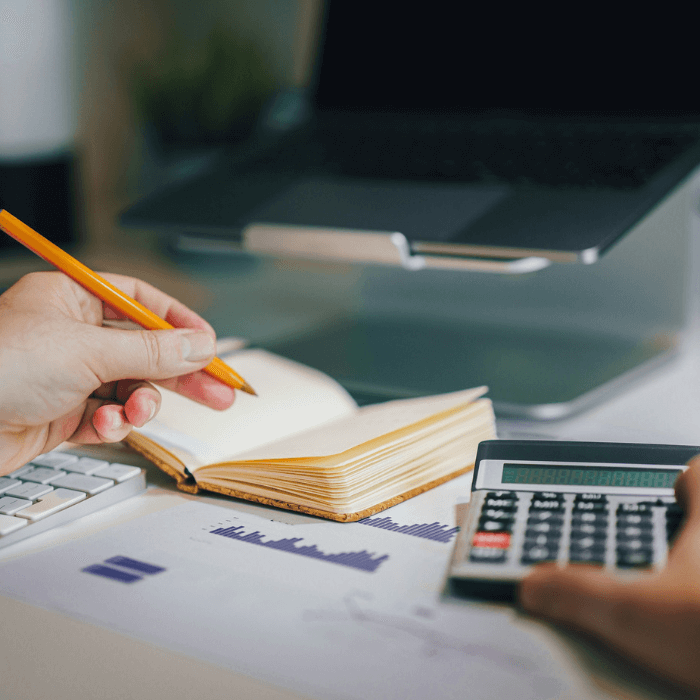
In this detailed report, we explore three important topics that have impacted the financial world over the past few weeks. Firstly, the recent Spring Budget announcement. We delve into the key takeaways and impacts on the economic landscape. Secondly, we touch on the ongoing debate between cryptocurrency and gold investments. Providing you with an idea of the pros and cons and delving into how recent all-time highs for both commodities have shaken up the investment space. Finally, we share our insights into gold's all-time price highs, discussing the potential for new norms and what the continued, predicted rise could mean for the wider market.
UK Chancellor Delivers Pre-Election Budget
The latest Spring Budget announcement brings forth a series of measures aimed at enhancing the financial well-being of households across the nation. Here's an overview of the key highlights:
National Insurance Cuts: Building upon previous initiatives, the Spring Budget heralds further reductions in National Insurance contributions. This move is set to benefit the majority of employed and self-employed workers, injecting a welcome boost into household budgets. However, it's important to note that some individuals may still find themselves on the short end due to frozen personal tax thresholds. Opponents of the government are pointing out that the Income Tax thresholds remain frozen, meaning more people may edge into higher tax brackets due to inflation and pay rises. Unlike a reduction in Income Tax, a cut to National Insurance contributions does not benefit those receiving income from other sources like pensions and dividends. Gold investors may wish to consider whether the move is likely to help boost the UK economy (and perhaps weigh on gold), or fuel inflation at a pivotal time for monetary policy (and thus potentially boost gold’s safe-haven appeal).
Introduction of British Saving Bonds and New British ISA: With the launch of 'British Saving Bonds' by NS&I and the introduction of a new ‘British ISA’, the government intends to foster a culture of savings and investment, empowering individuals to secure their financial futures. The plan announced by the Chancellor would see the introduction of an additional £5,000 ISA allowance for investments in British stocks. The existing ISA allowance of £20,000 will also remain in place for investors wishing to invest with greater freedom. Precious metals investors may wish to consider whether the new British ISA will significantly boost investment into UK stocks, and what a stronger UK market might mean for gold, silver and platinum prices. It is currently unclear whether physical precious metals stocks would be eligible to be held in a British ISA, so investors wishing to diversify their ISA portfolios may wish to do so via their existing Stocks & Shares ISAs.
A summary of other measures announced:
Freeze on Air Passenger Duty and Fuel Duty: While acknowledging the need for fiscal prudence, the Chancellor maintained a freeze on Air Passenger Duty and Fuel Duty, providing relief to travellers and motorists alike.
Scrapping of Non-Dom Rules: The government have adopted a policy of phasing out the ‘non-domicile’ tax regime, meaning wealthy UK residents whose permanent home is outside the UK will pay tax in the UK on any money they earn outside the UK.
Extension of the Oil and Gas Windfall Tax: A windfall tax of 35% levied on energy companies was due to expire in March 2028, the Budget extended this to March 2029.
Increased Tax on Vaping Products: From 1st October 2026, vaping products will see an uptick in taxation.
Alcohol Duty Freeze Until 1st February 2025: The Budget also extended the freeze on Alcohol Duty until February 2025.
Child Benefit Rules: A series of measures were announced that aim to create a fairer and more equitable landscape for families by eradicating some discrepancies.
Debt Relief Orders: The Chancellor announced that the £90 fee associated with Debt Relief Orders is to be abolished, helping some indebted individuals access the services they need.
Universal Credit Claimants: The Budget grants Universal Credit claimants additional time to pay 'Budgeting Advances.'
Vulnerable Households: The Budget allocated an extra £500 million through the extension of the Household Support Fund to vulnerable households.
In summary, the Spring Budget contained few surprises – some commentators see this as fiscally prudent, others as lacking ambition. Investors may wish to consider the impact of the Spring Budget and the upcoming election on their investment portfolios. Are you seeking a safe haven in gold, or increasing investments in equities and bonds?
Gold vs. Bitcoin: The Ongoing Dilemma
The renaissance of Bitcoin and other cryptocurrencies over the last few months has sparked the renewed interest of many investors.
Bitcoin has benefitted from two major catalysts driving new interest in the alternative asset. In January, the US Securities and Exchange Commission approved the first US-listed exchange-traded funds (ETFs) to track the Bitcoin price. This was widely anticipated, but after several false starts, the pent-up anticipation and demand have seen Bitcoin almost double in price in recent months. But is the growth of cryptocurrency ETFs driven by a desire to seek liquidity (and move away from online cryptocurrency exchanges), a genuine increase in long-term demand, or a rush to benefit from the price gains following the news (and how stable is this demand over the medium-term)?
Furthermore, the Bitcoin is about to undergo a process known as halving, which reduces the incentive to mine new Bitcoin (by half) and thus acts as a constrictor to new supply.
This has brought Bitcoin back into the conversation, with investors asking whether it can play a similar role to gold within a well-diversified investment portfolio. However, despite some similarities, including their limited supply and roles as alternatives to fiat currencies. There are also some fundamental differences that investors - and potential investors - should carefully consider. A comprehensive analysis published by the World Gold Council found the following:
- Sources of gold demand are more diverse compared to the supply and ownership of cryptocurrencies, which are more concentrated.
- Whilst cryptocurrencies have contributed to some extremely high returns, they have also added significant risk to portfolios.
- Gold is a highly liquid asset, therefore portfolios that include crypto could benefit from higher allocations to gold.
- Gold and cryptocurrencies play very different roles within an investment portfolio.
See more here: https://www.gold.org/goldhub/research/gold-and-cryptocurrencies
For gold investors the question may well be whether the crypto boom is sustainable, and if not, whether this may prompt a flight to gold as a traditional haven.
Fundamental Differences Between Gold and Cryptocurrencies
The Dual Nature of Gold
Gold has been recognised as an important, tangible store of wealth and a form of exchange for thousands of years. It is owned not only by individual investors but also by institutional investors and central banks all over the world. It has a growing use in technology as well as high-end electronics, besides its extreme popularity in jewellery, particularly in China and India where it has strong cultural and religious connotations.
This dual nature of gold, whereby it is valued as both an investment and a consumer good, sets it apart from other investment assets. It has also often resulted in a strong performance of the yellow metal both during times of economic hardship and during times of economic growth.
Conversely, cryptocurrencies such as Bitcoin are, of course, digital (not tangible) and the source of their demand is more concentrated, predominantly for investment. According to the World Gold Council, the recent volatility in the price of Bitcoin may suggest that it mainly responds to speculative price momentum rather than a means of storing wealth over the long term.
Gold is a Scarce Natural Element
Whilst both gold and Bitcoin are finite, the above-the-ground stocks of gold have been increasing by around 1.7% a year for the last 20 years. In contrast to this, Bitcoin supply has grown at a much faster rate than this (albeit with the new supply rate slowing over time) Furthermore, the cryptocurrency space has grown immensely in recent years, and there are now thousands of different types of cryptocurrencies, along with Bitcoin, available to purchase via various online platforms. This has fragmented the (unregulated) crypto market somewhat.
Bitcoin’s Value-at-Risk is Almost Five Times Higher Than That of Gold
The price of Bitcoin has risen substantially over the last 10 years, culminating in recent price spikes above $73,000 per coin, up from just a few hundred Dollars in 2014. These dramatic and somewhat erratic price rises captured the imagination of many individual investors, even encouraging some institutional investment. However, with great reward often comes great risk, and Bitcoin’s price rally has also come with significant volatility. Bitcoin has been at least three times more volatile than the S&P 500 in the recent past and around four times more volatile than the price of gold.
Bitcoin Has Yet to Prove Itself as a Safe-Haven
At certain times, Bitcoin has been seen to display ‘safe-haven’ like behaviours, as it has appeared to move in a similar direction as some traditional hedges, including gold. But there is no consistent trend to this behaviour. For example, in March 2020, the price of Bitcoin dropped by more than 40% and ended the month 25% down. In contrast, while the gold price initially fell by 8% in the same period, it quickly rebounded to the level it started and continued the upward trajectory as investors continued to add hedges to their portfolios.
Gold Shines Through: What’s Next?
Gold has been trusted as an effective store of wealth for millennia. According to the World Gold Council, gold has offered a source of returns rivalling the stock market over various periods. As an asset, it has traditionally performed well during times of inflation, with a highly liquid and established market. Gold has played an important role as a portfolio diversifier and, on many occasions has demonstrated a negative correlation to the market during economic downturns.
The cryptocurrency market is still in development and its price behaviour appears to be driven by momentum around investor expectations for high returns. Bitcoin has been much more volatile than gold over the recent past, therefore adding additional risk to investment portfolios. As iterated earlier within this report, The World Gold Council suggests that portfolios with a high allocation to Bitcoin - or cryptocurrencies in general - might benefit from higher allocations to gold due to its role as a hedge against risk.
After a contraction in gold price volatility in the last quarter, gold was keenly poised to break out from its consolidation of around £1,600 per troy ounce. News from the US in February suggested that inflation and price pressures were abating in the United States; this saw the dollar fall sharply on the data release, and thus gold was thrust higher into new all-time highs. The price now rests around a new level close to £1,700.
Gold investors are asking; What next for the gold price? Have we found a new trading range?
Following the publication of the LBMAs Precious Metals Forecast Survey for 2024, 84% of participating analysts believed that the gold price would hit or exceed $2,200 this year. While just 28% of respondents asked in January forecast gold prices to hit or exceed $2,300, some may be wondering whether this scenario is more likely now the price is hovering close to $2,200. Tailwinds could arise from elections, geopolitical events, and a change in the direction of monetary policy.
The average forecasted price among all analysts reached $2,237.40, with Chantelle Schieven of Capitalight Research predicting the gold price to hit $2,405. Explaining her rationale for the LBMA, Schieven cited ‘lower interest rates, lower US dollar, continued central bank gold demand, and geopolitical/financial crises’. Reflecting on the yellow metal's history of rising during times of uncertainty, Shieven said ‘gold could literally surge at any time on the back of any number of crises over the next several years.’
If these projections come to fruition, it suggests that gold could still achieve higher prices this year.
Meet the Authors
Stuart O'Reilly

Stuart is The Royal Mint’s Market Insight Manager, providing the business and investors with information and analysis about the precious metals markets, competitors and wider economic trends.
Stuart joined The Royal Mint from HM Revenue and Customs in 2017 and has since worked broadly across the Precious Metals Division with involvement in product and strategic planning. Stuart helped develop The Royal Mint’s Gold for Pensions offering before moving to a broader role in The Royal Mint’s Insights Team.
Through his understanding of the precious metals market and customers, Stuart now helps inform and shape The Royal Mint’s tactical and strategic plans. Stuart is a leading voice and commentator on the UK gold market.
Steven Jones

Wealth Management Expert Steve joined The Royal Mint in 2022 with a particular focus on Gold for Pensions, RMAU; The Royal Mint’s stock exchange listed ETC, and our individual wealth management customers.
Steve began his career with wealth management firm Brewin Dolphin, working towards becoming a chartered investment manager. He spent nine years with Brewin before a stint with Rathbones Group.
Steve is a member of the Chartered Institute for Securities and Investment (CISI) and is Level 7 qualified, achieving a Diploma in Wealth Management, which is a post-graduate level industry-specific qualification.
Sources
- Bitcoin halving explained: What is ‘historic’ crypto event and will price hit new record? | The Independent
- https://www.royalmint.com/invest/investing-in-precious-metals/precious-metals-academy/precious-metals-academy-advanced-course/module-8/
- Gold and Cryptos – the Differences Explained | World Gold Council
- Bitcoin Is Unlikely to Match Gold’s Allocation in Investors’ Portfolios in Nominal Terms: JPMorgan (coindesk.com)
- SEC.gov | Statement on the Approval of Spot Bitcoin Exchange-Traded Products
- Gold advances to three-month high on rising rate cut bets | Reuters
- https://www.lbma.org.uk/articles/precious-metals-forecast-survey-2024
Notes
The contents of this article are accurate at the time of publishing, are for general information purposes only, and do not constitute investment, legal, tax, or any other advice. Before making any investment or financial decision, you may wish to seek advice from your financial, legal, tax and/or accounting advisers.
This article may include references to third-party sources. We do not endorse or guarantee the accuracy of information from external sources, and readers should verify all information independently and use external sources at their own discretion. We are not responsible for any content or consequences arising from such third-party sources.




